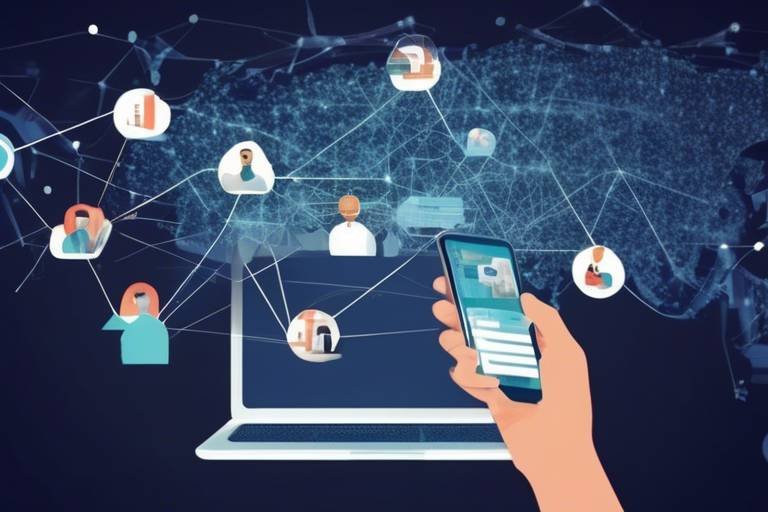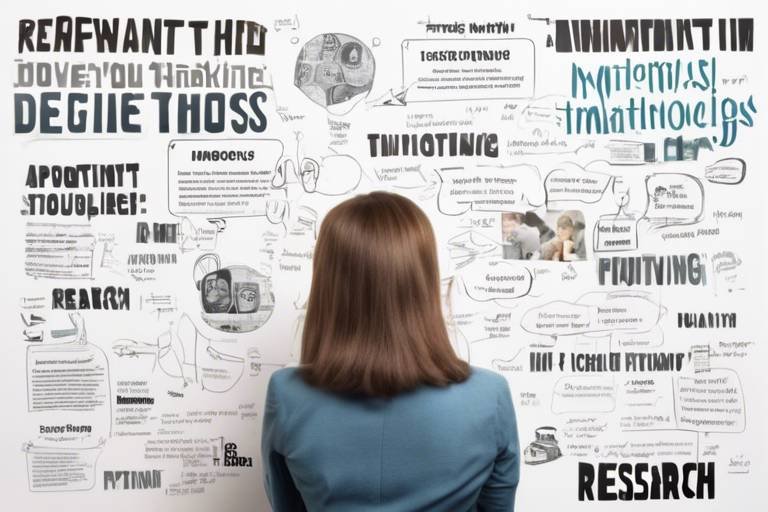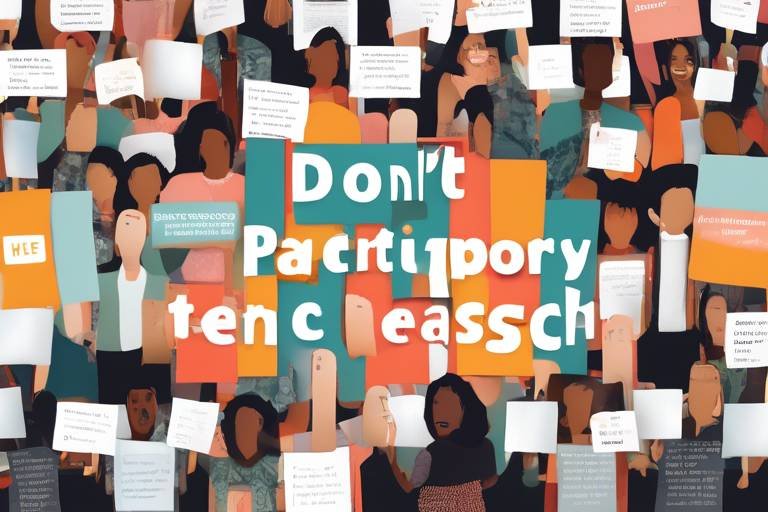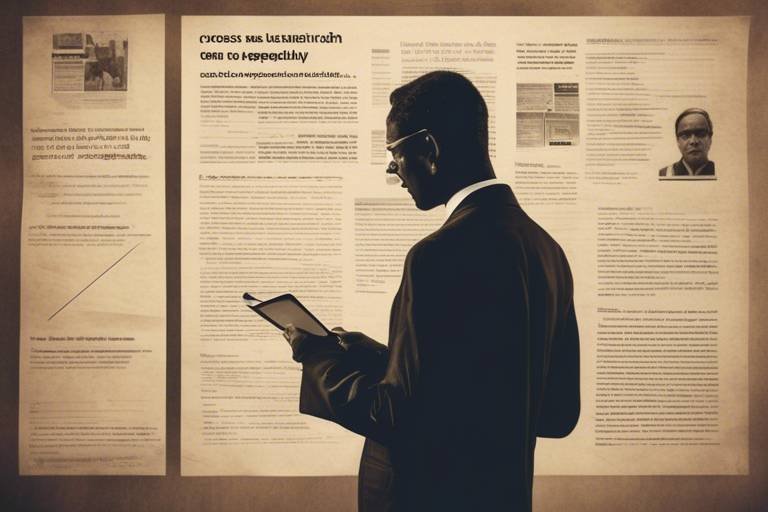Mobile Ethnography - Capturing Real-Time Experiences
In our fast-paced digital world, understanding user behavior has never been more crucial. Enter mobile ethnography, a research method that leverages the power of mobile technology to capture real-time experiences of individuals in their natural environments. This innovative approach not only provides a window into the lives of users but also allows researchers to gather insights that are often missed in traditional research methods. Imagine being able to witness a user’s interaction with a product as it happens, rather than relying solely on retrospective accounts. This is the magic of mobile ethnography!
At its core, mobile ethnography embodies the essence of modern research—it's dynamic, engaging, and incredibly insightful. With the rise of smartphones and mobile apps, researchers can now connect with participants in ways that were previously unimaginable. This method allows for a more immersive understanding of how people interact with products, services, and their environments. Think of it as having a personal lens into the everyday lives of users, capturing their thoughts and feelings in the moment.
One of the most exciting aspects of mobile ethnography is its ability to adapt to various contexts. Whether it’s understanding shopping behaviors in a retail setting, exploring patient experiences in healthcare, or even examining educational practices in classrooms, mobile ethnography can be tailored to fit the specific needs of diverse fields. Researchers can utilize multimedia tools, such as videos and photos, to enrich the data collected, providing a comprehensive view of participant experiences.
Moreover, mobile ethnography is not just about collecting data; it's about creating a dialogue. Participants can share their thoughts and experiences in real-time, leading to a more authentic representation of their behaviors and attitudes. This interactive element fosters a sense of collaboration between researchers and participants, transforming the research process into a shared journey of discovery.
As we delve deeper into the world of mobile ethnography, it's essential to recognize its transformative potential. By capturing real-time experiences, researchers can uncover patterns and insights that drive innovation and improve user experiences across various sectors. In the following sections, we'll explore the evolution of ethnographic research, the benefits and challenges of mobile ethnography, its applications in different fields, and the future trends that will shape this exciting research method.
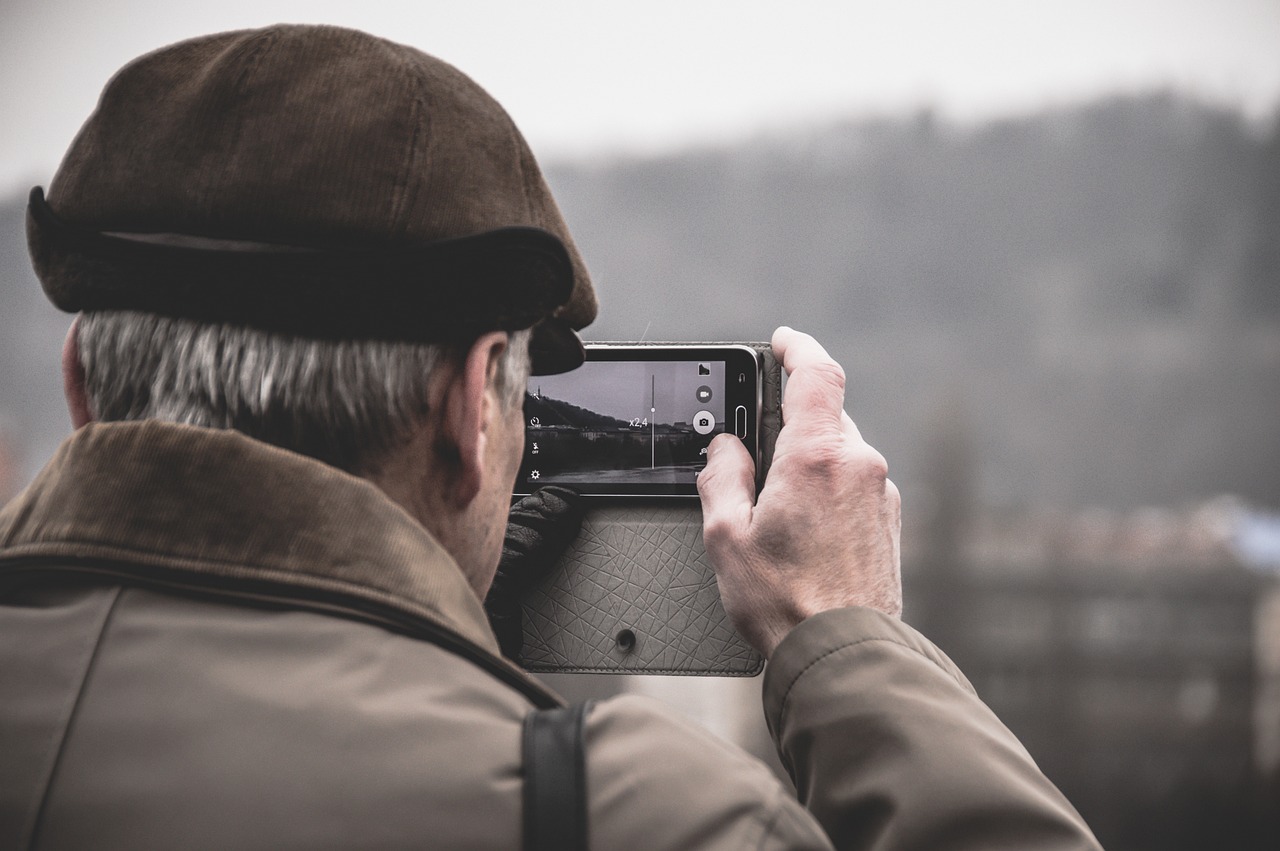
The Evolution of Ethnographic Research
Ethnographic research has come a long way since its inception, evolving from traditional field studies into a dynamic and multifaceted approach that incorporates modern technology. Originally rooted in anthropology, ethnography aimed to understand cultures through immersive observation and participation. Researchers would often spend extended periods living within communities, meticulously documenting their findings in notebooks. This method, while rich in detail, was time-consuming and often limited by geographical constraints.
However, the advent of mobile technology has revolutionized the landscape of ethnographic research. With smartphones and tablets in the hands of nearly everyone, researchers can now tap into a wealth of real-time data that was previously unattainable. Imagine being able to observe and record consumer behavior as it unfolds, rather than relying solely on retrospective interviews or surveys. This shift has transformed ethnography into a more accessible and immediate discipline, allowing researchers to capture the nuances of human behavior in ways that were once thought impossible.
One of the most significant changes brought about by mobile technology is the ability to conduct research across a broader spectrum of demographics. No longer confined to specific locations or communities, researchers can engage with participants from various backgrounds, enhancing the richness of their data. This democratization of research means that insights can be gathered from a diverse range of perspectives, leading to more comprehensive and nuanced understandings of human behavior.
As we look at the evolution of ethnographic research, it’s essential to recognize the role of digital tools in shaping methodologies. The integration of video recordings, photography, and social media platforms has allowed researchers to engage with participants in a more interactive manner. For instance, researchers can now ask participants to document their daily experiences via mobile apps, creating a tapestry of real-time insights that reflect authentic behaviors and emotions. This method not only enriches the data collected but also fosters a sense of ownership among participants, as they contribute actively to the research process.
In summary, the evolution of ethnographic research is a testament to the power of technology in enhancing our understanding of human behavior. By embracing mobile ethnography, researchers can capture the essence of real-time experiences, making their findings more relevant and impactful. As we continue to innovate and adapt, the future of ethnographic research promises to be as exciting as its past.

Benefits of Mobile Ethnography
Mobile ethnography has emerged as a groundbreaking research method, providing a plethora of benefits that traditional ethnographic approaches simply can't match. Imagine being able to step into the shoes of your participants, seeing the world through their eyes, and capturing their genuine reactions in real-time. This method not only enhances the richness of data collected but also creates a more engaging experience for both researchers and participants. If you're wondering how this all works, let’s dive into the key benefits that make mobile ethnography a game-changer in various fields.
One of the standout features of mobile ethnography is its ability to foster enhanced participant engagement. By using mobile devices, researchers can create a more interactive environment that encourages participants to share their experiences spontaneously. Think of it as inviting someone to tell their story while they're living it, rather than asking them to recall it later. This immediacy leads to more authentic responses, as participants feel more comfortable expressing their thoughts in a familiar setting. They can use their smartphones to record videos, take photos, or even jot down notes, all of which can be shared directly with the researcher. This level of engagement not only enriches the data but also empowers participants, giving them a voice in the research process.
Another significant advantage of mobile ethnography is the capability for real-time data collection. In traditional research methods, data is often gathered after an event has occurred, which can lead to inaccuracies and lost nuances. With mobile ethnography, researchers can capture moments as they happen, ensuring that the data reflects the context and emotions of the experience. This immediacy is crucial for understanding the dynamics of human behavior. For instance, if a participant is shopping and has a frustrating experience, they can capture that moment on video, providing invaluable insights into their feelings and reactions. The table below illustrates the differences between traditional methods and mobile ethnography in terms of data collection timing:
| Method | Data Collection Timing | Data Richness |
|---|---|---|
| Traditional Ethnography | Post-Event | Often Limited |
| Mobile Ethnography | Real-Time | Highly Rich |
Accessibility and convenience are also key benefits of mobile ethnography. In our fast-paced world, participants often juggle numerous responsibilities, making it challenging for them to commit to lengthy research sessions. Mobile ethnography allows participants to engage in the research process at their convenience, whether they're at home, on their commute, or even on vacation. This flexibility not only leads to higher participation rates but also opens the door to a broader demographic reach. Researchers can gather insights from diverse populations, capturing a wide array of experiences and perspectives that might otherwise be overlooked.
In summary, mobile ethnography is revolutionizing the way we conduct research by offering enhanced engagement, real-time data collection, and increased accessibility. These benefits not only improve the quality of data but also enrich the overall research experience for participants. As technology continues to evolve, the potential for mobile ethnography to provide deeper insights will only grow, making it an indispensable tool in various fields.
- What is mobile ethnography? - Mobile ethnography is a research method that uses mobile devices to collect qualitative data in real-time, allowing researchers to observe and understand user experiences as they happen.
- How does it differ from traditional ethnography? - Unlike traditional ethnography, which often relies on retrospective accounts, mobile ethnography captures experiences in the moment, resulting in richer and more accurate data.
- What fields can benefit from mobile ethnography? - Mobile ethnography is applicable in various fields, including marketing, healthcare, education, and social research, providing tailored insights that drive innovation.

Enhanced Participant Engagement
In the realm of research, participant engagement is crucial for gathering authentic and insightful data. Mobile ethnography revolutionizes this aspect by leveraging the ubiquitous nature of mobile devices. Imagine a world where participants feel less like subjects in a study and more like storytellers sharing their experiences. This transformation is made possible through the use of smartphones and tablets, which allow researchers to connect with participants in their natural environments.
One of the most significant advantages of mobile ethnography is its ability to foster an interactive relationship between researchers and participants. Traditional methods often involve structured interviews or surveys that can feel rigid and impersonal. However, with mobile ethnography, participants can share their thoughts and experiences in real-time, using various multimedia formats such as videos, photos, and voice recordings. This not only makes the process more engaging but also enriches the data collected.
Consider the following ways mobile ethnography enhances participant engagement:
- Natural Interaction: Participants can document their experiences as they happen, leading to more genuine and spontaneous responses.
- Multimedia Sharing: The ability to capture and share videos or photos allows participants to express their feelings and thoughts more vividly, providing richer data.
- Feedback Loop: Researchers can interact with participants during the data collection process, asking follow-up questions or clarifying points, which deepens the engagement.
Moreover, mobile ethnography allows participants to engage on their own terms. They can contribute to the research when it fits into their schedule, whether that’s during a commute, at home, or while out with friends. This flexibility leads to higher participation rates and a more diverse range of perspectives. When participants feel that their input is valued and that they have a say in how the research unfolds, it creates a sense of ownership over the process. This, in turn, can lead to more thoughtful and detailed contributions.
To illustrate this point further, let’s look at a hypothetical scenario. Imagine a company conducting mobile ethnography to understand how consumers use their products in everyday life. Instead of asking participants to come in for a focus group, they invite them to use an app to document their experiences over a week. Participants might share a video of themselves using the product while cooking dinner or snap a quick photo of it at a picnic. These real-life moments are not just data points; they tell a story that a traditional survey simply cannot capture.
In conclusion, mobile ethnography redefines participant engagement by making the research process dynamic, interactive, and personal. By empowering participants to share their experiences in their own words and on their own terms, researchers can gather richer, more nuanced data that can lead to deeper insights and more impactful outcomes.
- What is mobile ethnography? Mobile ethnography is a research method that utilizes mobile devices to capture real-time experiences and insights from participants in their natural environments.
- How does mobile ethnography enhance participant engagement? It allows participants to share their experiences through multimedia formats and at their convenience, fostering a more interactive and genuine relationship.
- What are the benefits of using mobile ethnography? Benefits include real-time data collection, enhanced participant engagement, and greater accessibility, leading to richer insights.

Real-Time Data Collection
Imagine being able to capture the essence of a moment just as it unfolds. That’s the magic of in mobile ethnography. This innovative approach allows researchers to gather insights on user experiences as they happen, providing a level of immediacy that traditional methods simply can’t match. Think of it like having a front-row seat to a live performance—every reaction, every nuance is recorded in the moment, offering a richer narrative than any retrospective account could provide.
With mobile devices in hand, researchers can prompt participants to document their thoughts, feelings, and actions in real-time. This can be achieved through various methods, such as video recordings, audio diaries, or even quick surveys sent directly to a participant’s smartphone. The immediacy of this data collection process not only enhances the authenticity of the insights gathered but also allows researchers to capture fleeting moments that might otherwise be forgotten. For instance, if a participant experiences a sudden frustration while using a product, they can instantly record their reaction, complete with context and emotion.
Furthermore, the flexibility of mobile ethnography means that data can be collected in diverse environments, whether it’s at home, in a store, or during a commute. This accessibility creates a more comprehensive understanding of user behavior across different contexts. To illustrate this, consider the following table that outlines the advantages of real-time data collection:
| Advantage | Description |
|---|---|
| Contextual Insights | Captures user experiences in their natural environment, leading to more relevant data. |
| Immediate Feedback | Allows researchers to ask follow-up questions or clarify responses on the spot. |
| Rich Data Variety | Enables the collection of various data types, including videos, photos, and text entries. |
However, it’s important to remember that real-time data collection also requires careful planning and consideration. Researchers must ensure that participants are comfortable sharing their experiences in the moment, which may necessitate building trust and rapport beforehand. Additionally, ethical considerations surrounding privacy and consent must be at the forefront of any data collection strategy. By addressing these challenges, researchers can fully leverage the potential of real-time data collection to unlock deeper insights into user behavior.
- What is mobile ethnography? Mobile ethnography is a qualitative research method that uses mobile technology to gather insights on user experiences in real-time.
- How does real-time data collection benefit researchers? It allows for capturing authentic experiences as they happen, providing richer and more contextual data.
- What are some challenges of mobile ethnography? Challenges include technological barriers, ethical considerations, and the need for participant comfort and engagement.

Accessibility and Convenience
One of the most significant advantages of mobile ethnography is its inherent . Imagine being able to participate in research without the need to travel to a specific location or adhere to rigid schedules. With mobile ethnography, participants can engage with the research process from the comfort of their own homes or while on the go. This flexibility not only makes it easier for individuals to contribute their insights but also opens the door to a wider range of participants who might otherwise be excluded due to logistical challenges.
Consider this: traditional ethnographic methods often require researchers to conduct interviews or observations in controlled settings, which can feel artificial and limit the authenticity of the data collected. In contrast, mobile ethnography allows participants to share their experiences in real-world contexts, using their smartphones or tablets to document their thoughts, feelings, and reactions in real-time. This approach captures the nuances of everyday life that might be overlooked in more structured environments.
Furthermore, the convenience of mobile ethnography encourages higher participation rates. Participants can choose when and where to engage with the research, making it more likely that they will take part. This is particularly beneficial for reaching diverse demographics, including those who may have busy schedules, caregiving responsibilities, or mobility issues. By removing barriers to participation, researchers can gather richer, more varied data that truly reflects the experiences of their target audience.
To illustrate the impact of accessibility in mobile ethnography, consider the following table:
| Factor | Traditional Ethnography | Mobile Ethnography |
|---|---|---|
| Location | Fixed, often requiring travel | Flexible, participants choose |
| Time Commitment | Scheduled sessions | On-demand, as per participant's convenience |
| Participant Diversity | Limited by access and availability | Wider reach, inclusive of varied demographics |
| Data Authenticity | Controlled environments | Real-world contexts |
In summary, the accessibility and convenience offered by mobile ethnography not only enhance participant engagement but also enrich the overall research process. By allowing individuals to share their experiences in a way that feels natural and unforced, researchers can gain deeper insights that drive innovation and improve user experiences across various fields.
- What is mobile ethnography? Mobile ethnography is a research method that utilizes mobile devices to collect real-time data on participants' experiences and behaviors in their natural environments.
- How does mobile ethnography improve participation? It offers flexibility in terms of time and location, allowing participants to engage with the research process when it suits them best.
- What are some challenges associated with mobile ethnography? Challenges can include technological barriers, such as participants' access to devices and internet connectivity, as well as ethical considerations regarding privacy and data security.
- In what fields can mobile ethnography be applied? Mobile ethnography can be used in various fields, including marketing, healthcare, education, and social sciences, to gather authentic insights from users.
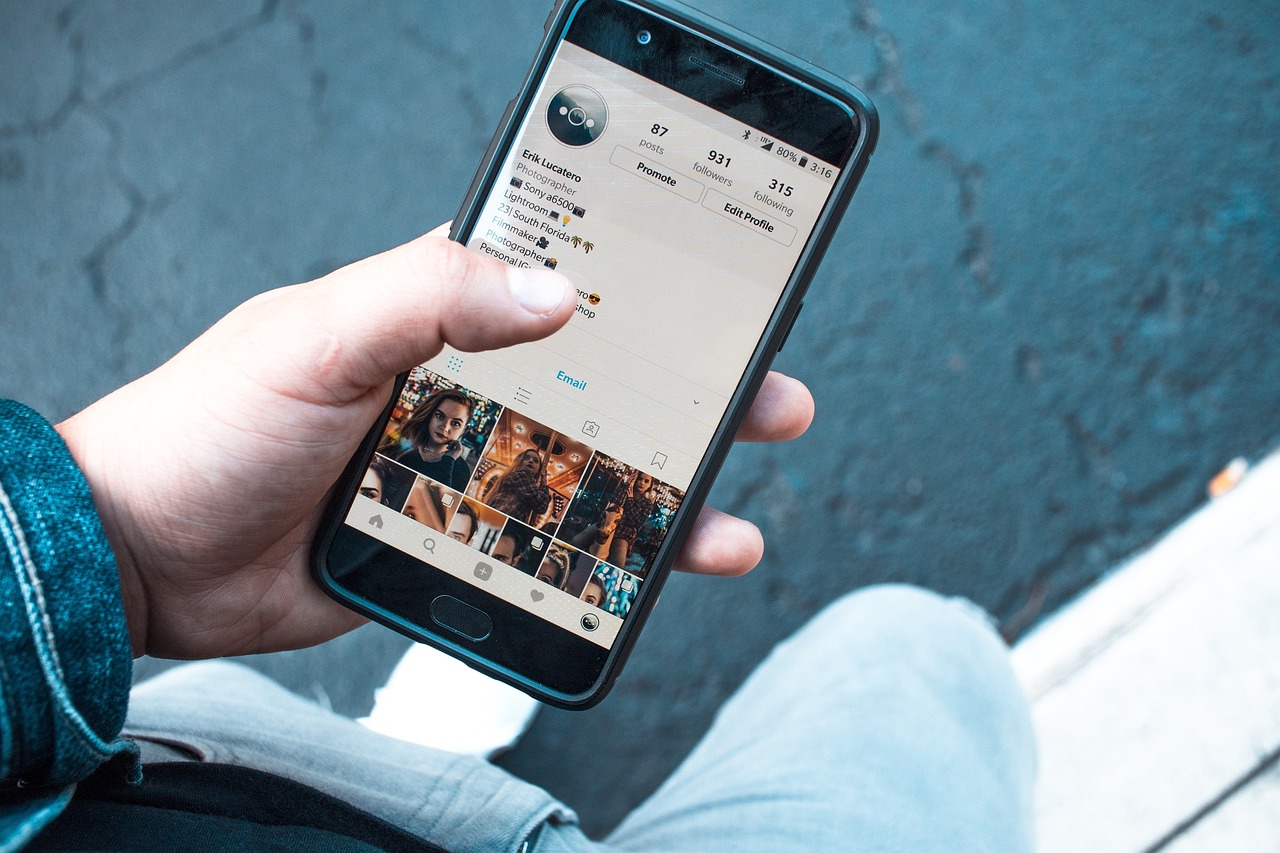
Challenges in Mobile Ethnography
While mobile ethnography presents a plethora of opportunities for researchers, it is not without its challenges. One of the most significant hurdles is the technological barrier. Not all participants may have access to the latest mobile devices or stable internet connections, which can lead to discrepancies in data collection. Imagine trying to capture a fleeting moment of inspiration or a spontaneous reaction, only to find that your participant's device is outdated or their connection is spotty. This not only affects the quality of the data but can also discourage participation, as individuals may feel frustrated by technical difficulties.
Another critical aspect to consider is ethical considerations. With the ease of capturing real-time data comes the responsibility of ensuring that participants' privacy is safeguarded. Researchers must navigate a fine line between collecting valuable insights and respecting the personal boundaries of their participants. This often involves obtaining informed consent and being transparent about how the data will be used, which can be a complex process, especially in sensitive environments such as healthcare or education.
Moreover, the data overload phenomenon can pose a challenge. With mobile ethnography, researchers might find themselves inundated with a vast amount of data collected over short periods. Sifting through this information to extract meaningful insights can be overwhelming. It’s akin to trying to find a needle in a haystack; the more data you collect, the harder it can be to pinpoint the truly valuable nuggets that drive actionable conclusions.
Additionally, there’s the issue of participant engagement. While mobile devices can foster a more interactive relationship, they can also lead to distractions. Participants might be tempted to check social media or answer messages during data collection, which can dilute the authenticity of their responses. Researchers need to find ways to keep participants focused and engaged, ensuring that the data collected reflects genuine experiences rather than fragmented thoughts.
Lastly, the cultural context plays a crucial role in mobile ethnography. Different cultures may have varying levels of comfort with technology and data sharing. Researchers must be culturally sensitive and adaptable, tailoring their approaches to fit the unique contexts of their participants. This adaptability can also extend to understanding how mobile technology is perceived in different societies, which can significantly impact the quality of the data collected.
In summary, while mobile ethnography is a powerful tool for capturing real-time experiences, researchers must navigate a landscape filled with technological, ethical, and cultural challenges. Addressing these issues head-on can lead to more robust research outcomes and a deeper understanding of participant behaviors and experiences.
- What is mobile ethnography?
Mobile ethnography is a research method that uses mobile devices to collect real-time data on participant experiences and behaviors in their natural environments.
- What are the main benefits of mobile ethnography?
Benefits include real-time data collection, enhanced participant engagement, and increased accessibility, allowing for a broader demographic reach.
- What challenges do researchers face with mobile ethnography?
Challenges include technological barriers, ethical considerations regarding privacy, managing data overload, maintaining participant engagement, and adapting to cultural contexts.
- In which fields is mobile ethnography commonly used?
Mobile ethnography is widely used in marketing, healthcare, education, and various other sectors to gain insights into user experiences and behaviors.

Applications in Various Fields
Mobile ethnography is a revolutionary approach that has found its way into a multitude of sectors, each benefiting from its unique insights and methodologies. Imagine being able to step into the shoes of your users, experiencing their world through their eyes—that's precisely what mobile ethnography allows researchers to do. By capturing real-time experiences, this method provides a rich tapestry of data that can inform decisions across various domains.
In the realm of marketing, for example, brands are constantly on the lookout for ways to connect with their consumers on a deeper level. Mobile ethnography serves as a bridge, offering a direct line to understanding consumer behavior, preferences, and pain points. Instead of relying solely on surveys and focus groups, marketers can observe how consumers interact with products in their natural environments. This leads to more effective strategies and product development that resonate with the target audience.
A notable case in point is how brands utilize mobile ethnography to enhance their advertising campaigns. By analyzing real-time feedback and behaviors, companies can pivot their strategies almost instantaneously, ensuring they remain relevant and appealing. The insights gained can be summarized in a table like this:
| Application Area | Benefits |
|---|---|
| Marketing | Understanding consumer behavior, improving product design, and enhancing advertising strategies. |
| Healthcare | Capturing patient experiences, identifying care gaps, and improving treatment satisfaction. |
| Education | Enhancing learning experiences, understanding student needs, and improving curriculum design. |
In the healthcare sector, mobile ethnography is proving to be invaluable. It allows researchers to capture patient experiences and behaviors in real-time, providing a wealth of information that can lead to improved care delivery and patient satisfaction. For instance, healthcare providers can observe how patients manage their conditions outside the clinical setting, leading to insights that can shape treatment plans and improve outcomes. This method not only enhances the understanding of patient journeys but also fosters a more empathetic approach to care.
Moreover, in the field of education, mobile ethnography is transforming how we understand learning environments. Educators can gain insights into student behaviors and preferences, allowing them to tailor instructional methods that cater to diverse learning styles. For example, by observing students in their study environments, educators can identify distractions and barriers to learning, leading to more effective teaching strategies. This approach encourages a more personalized and engaging educational experience, ensuring that no student is left behind.
In conclusion, the applications of mobile ethnography are vast and varied, impacting sectors from marketing to healthcare and education. As researchers continue to harness this innovative method, the potential for deeper understanding and improved outcomes across these fields is immense. The ability to capture authentic experiences in real-time not only enriches the data but also empowers organizations to make informed decisions that resonate with their audiences.
- What is mobile ethnography?
Mobile ethnography is a qualitative research method that utilizes mobile devices to collect real-time data about people's behaviors and experiences in their natural environments.
- How does mobile ethnography differ from traditional ethnography?
Traditional ethnography often involves lengthy fieldwork and observation in controlled settings, while mobile ethnography allows for immediate data collection in real-world contexts using technology.
- What are some challenges of mobile ethnography?
Challenges include technological barriers, participant privacy concerns, and the need for researchers to be skilled in using mobile tools effectively.
- In which fields is mobile ethnography most commonly used?
It is widely used in marketing, healthcare, and education, among other fields, to gather authentic insights that drive innovation.
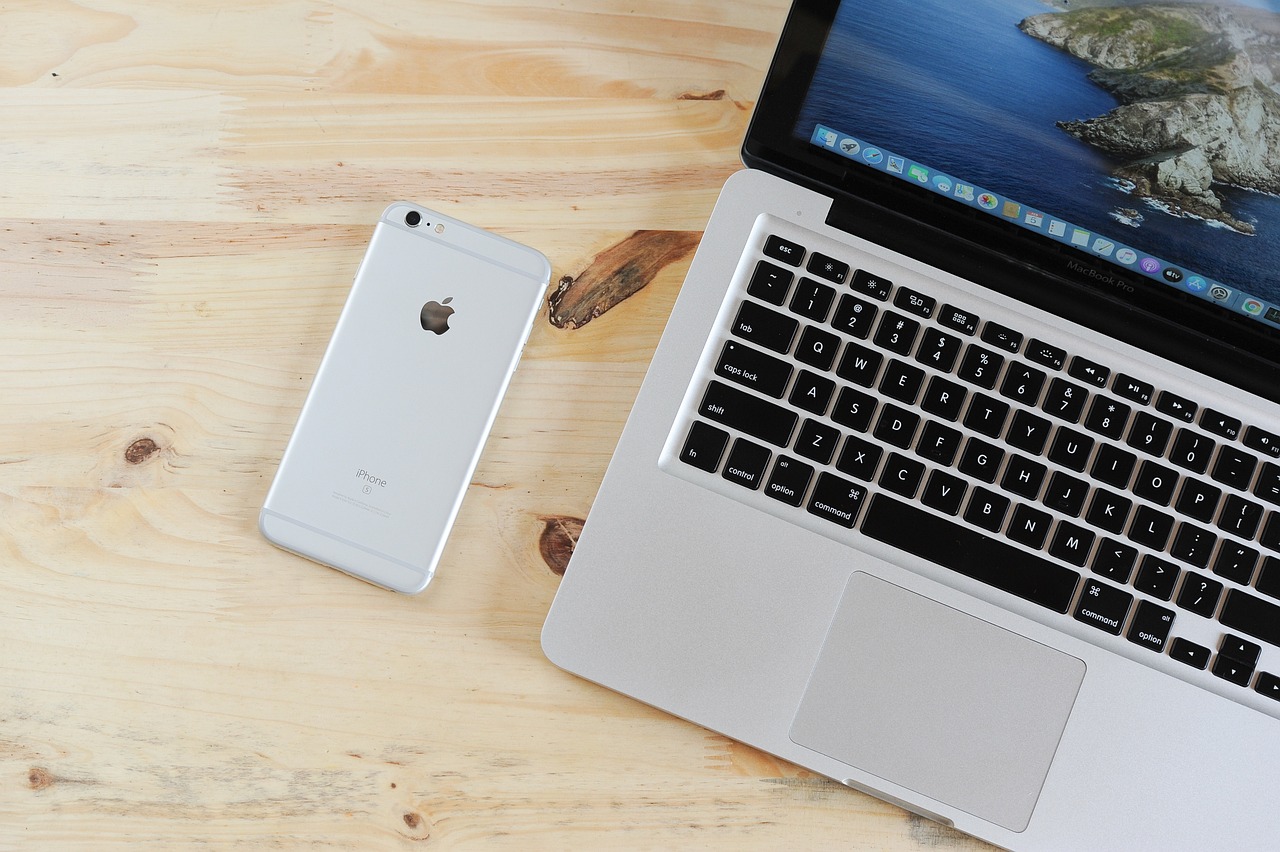
Marketing and Consumer Insights
In today's fast-paced market, understanding consumer behavior is more crucial than ever. Mobile ethnography offers a fresh lens through which brands can explore the intricate tapestry of consumer experiences. By leveraging mobile devices, researchers can immerse themselves in the daily lives of consumers, capturing authentic interactions with products and services in real-time. This method transcends traditional surveys and focus groups, providing a window into the emotions, thoughts, and behaviors that drive purchasing decisions.
Imagine a world where brands not only hear about consumer preferences but also witness them in action. With mobile ethnography, researchers can observe how consumers engage with products in their natural environments—be it in a bustling supermarket aisle or a cozy living room. This approach allows for a deeper understanding of the contextual factors that influence buying behavior. For instance, a brand might discover that a snack product is often consumed during family movie nights, leading to targeted marketing campaigns that resonate with that specific occasion.
Moreover, mobile ethnography fosters a two-way interaction between researchers and participants. This interaction not only enhances the richness of the data collected but also builds a rapport that encourages participants to share their thoughts more openly. Brands can ask follow-up questions in real-time, diving deeper into the why behind consumer choices. This is particularly valuable when trying to identify pain points or unmet needs in the market. For example, if a consumer expresses frustration with a product's packaging while recording their experience, researchers can quickly probe further to understand the underlying issues.
Another significant advantage of mobile ethnography in marketing is its ability to capture momentary insights. Unlike traditional methods that rely on retrospective accounts, this approach allows brands to gather data as events unfold. This immediacy can lead to unexpected revelations. For instance, a researcher might observe that consumers are more likely to purchase a product when they see it being used in a social setting, such as a picnic or a party. Such insights can inform marketing strategies that leverage social proof and community engagement.
To illustrate the impact of mobile ethnography on marketing strategies, consider the following table that summarizes key findings from recent studies:
| Study | Key Insight | Implication for Brands |
|---|---|---|
| Snack Consumption Patterns | Snacks are often consumed during social gatherings. | Target marketing campaigns around social events. |
| Packaging Frustrations | Consumers struggle with difficult-to-open packaging. | Redesign packaging for ease of use. |
| Impulse Purchases | Visual displays significantly influence impulse buying. | Enhance in-store displays to attract attention. |
As mobile ethnography continues to evolve, it is clear that its role in marketing will only grow. Brands that embrace this innovative research method will not only gain a competitive edge but also foster deeper connections with their consumers. In a world where personalization is key, understanding the nuances of consumer behavior through real-time insights can lead to more effective strategies and, ultimately, greater customer satisfaction.
- What is mobile ethnography? Mobile ethnography is a qualitative research method that utilizes mobile devices to capture real-time experiences and behaviors of participants in their natural environments.
- How does mobile ethnography differ from traditional ethnography? Unlike traditional ethnography, which often involves lengthy field studies, mobile ethnography allows for quicker data collection and immediate insights by leveraging technology.
- What are the main benefits of using mobile ethnography in marketing? The main benefits include enhanced participant engagement, real-time data collection, and the ability to observe consumer behavior in context, leading to more authentic insights.
- Are there challenges associated with mobile ethnography? Yes, challenges include technological barriers, potential privacy concerns, and the need for ethical considerations when collecting data from participants.
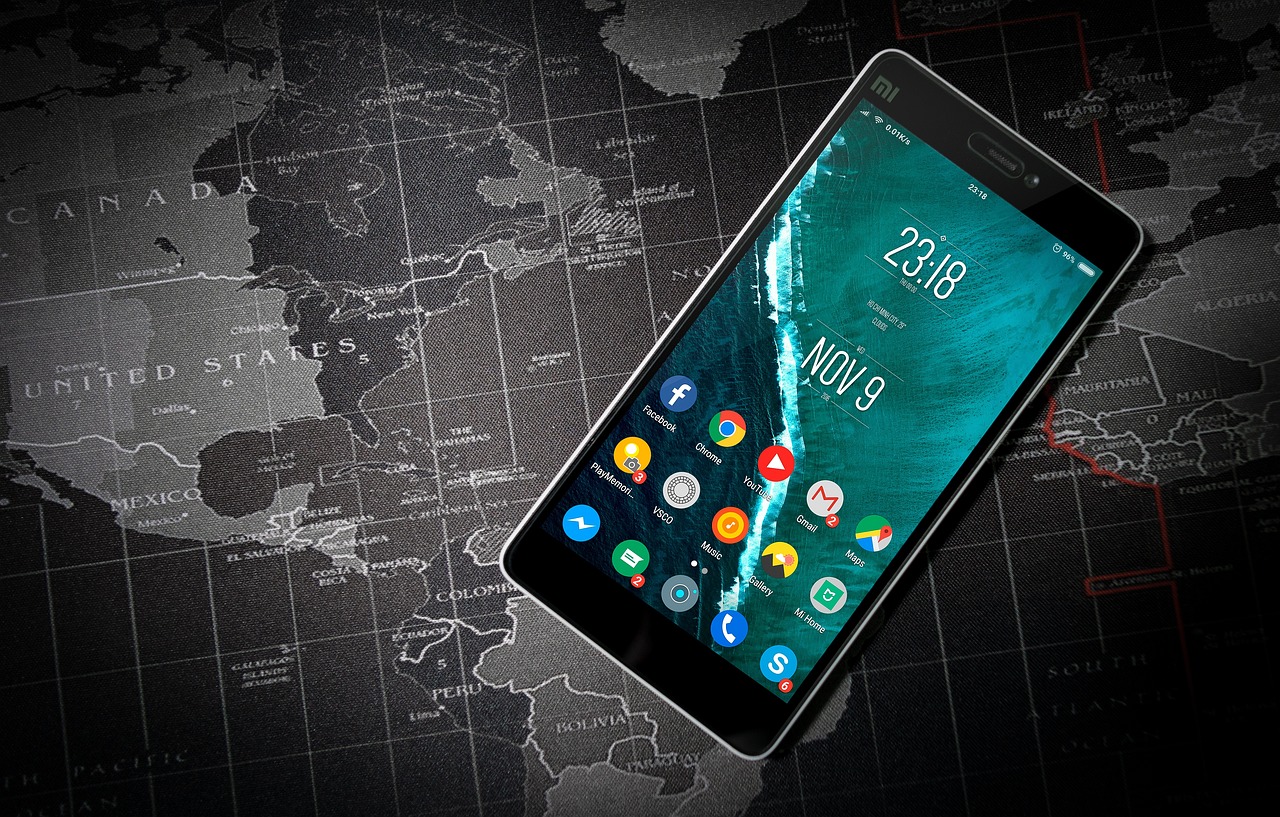
Healthcare Research
In the realm of healthcare, mobile ethnography is revolutionizing the way we understand patient experiences and behaviors. Imagine being able to capture a patient's journey, from their initial symptoms to their interactions with healthcare providers, all in real-time. This method allows researchers to step into the shoes of patients, gaining insights that traditional research methods might miss. By leveraging mobile technology, healthcare researchers can gather rich, qualitative data that paints a vivid picture of patient experiences.
One of the most significant advantages of mobile ethnography in healthcare is the ability to observe and document experiences as they happen. For instance, patients can use their smartphones to record videos or take notes about their feelings during treatment sessions or while managing chronic conditions. This immediacy not only enhances the authenticity of the data collected but also helps in understanding the emotional and psychological aspects of healthcare that are often overlooked.
Moreover, mobile ethnography fosters a deeper connection between researchers and participants. Unlike traditional surveys or focus groups, which can feel impersonal and detached, this method encourages patients to share their stories in a more organic and relatable manner. By creating a comfortable space for patients to express themselves, researchers can gather nuanced insights that lead to improved care strategies. For example, a healthcare provider may discover through mobile ethnography that patients are struggling with medication adherence not just because of forgetfulness, but due to side effects that they feel uncomfortable discussing in a clinical setting.
However, the implementation of mobile ethnography in healthcare does come with its own set of challenges. Technological barriers, such as varying levels of digital literacy among patients, can hinder participation. Additionally, ethical considerations around privacy and data security must be meticulously navigated. Researchers must ensure that they have informed consent and that participants feel safe sharing their personal health information through mobile platforms.
As we look to the future, the potential for mobile ethnography in healthcare is immense. With advancements in technology, such as wearable devices and health apps, researchers can gain even more comprehensive insights into patient behaviors and outcomes. This evolving landscape presents an exciting opportunity for healthcare providers to enhance patient care and satisfaction significantly.
- What is mobile ethnography in healthcare? Mobile ethnography is a research method that uses mobile technology to collect real-time data about patient experiences and behaviors.
- How does it improve patient care? By capturing authentic patient experiences, healthcare providers can gain insights that lead to better care strategies and improved patient satisfaction.
- What are the challenges of using mobile ethnography? Challenges include technological barriers, ethical considerations, and ensuring participant privacy and data security.
- What future trends can we expect? As technology advances, mobile ethnography will likely integrate new tools and methodologies, enhancing research capabilities and outcomes in healthcare.

Future Trends in Mobile Ethnography
As we gaze into the crystal ball of mobile ethnography, it’s clear that this research method is on the brink of a major transformation. The advent of advanced technologies such as artificial intelligence, augmented reality, and big data analytics is set to revolutionize how researchers capture and analyze user experiences. Imagine a world where researchers can immerse themselves in a participant's daily life through virtual environments, gaining insights that were previously unimaginable. This is not just a dream; it’s a future that is fast approaching.
One of the most exciting trends is the integration of AI-driven analytics. With machine learning algorithms analyzing vast amounts of data collected through mobile devices, researchers can identify patterns and trends with unprecedented speed and accuracy. This means that instead of spending weeks sifting through data manually, insights could be generated almost instantaneously. The result? More informed decision-making and a deeper understanding of user behavior.
Moreover, the use of augmented reality (AR) in mobile ethnography is gaining traction. Picture this: a researcher can overlay digital information onto a participant's real-world environment through their smartphone. This capability could allow for real-time feedback and interaction, creating a more engaging research experience. For instance, in a retail setting, researchers could observe how consumers interact with products while simultaneously offering them contextual information or prompts that enhance their shopping experience.
Another significant trend is the growing emphasis on ethical considerations. As mobile ethnography becomes more prevalent, researchers are increasingly aware of the need to protect participant privacy and data security. This means developing robust ethical guidelines and ensuring that participants are fully informed about how their data will be used. Transparency will be key in maintaining trust and fostering a collaborative research environment.
Additionally, the rise of collaborative research platforms is transforming how mobile ethnography is conducted. These platforms allow multiple researchers to work together in real-time, sharing insights, data, and findings. This collaborative approach not only enhances the richness of the data collected but also encourages diverse perspectives, leading to more comprehensive conclusions. Imagine a team of researchers from different backgrounds analyzing the same data set and coming up with innovative solutions that no single researcher could have achieved alone!
In summary, the future of mobile ethnography is bright and filled with potential. As technology continues to evolve, researchers will have access to tools that not only enhance their ability to gather and analyze data but also improve participant engagement and ethical standards. The next decade promises to be an exciting time for mobile ethnography, paving the way for groundbreaking discoveries that can significantly impact various fields.
- What is mobile ethnography? Mobile ethnography is a research method that utilizes mobile devices to collect real-time data about participants' behaviors, experiences, and environments.
- How does mobile ethnography differ from traditional ethnography? Unlike traditional ethnography, which often involves prolonged observation in a specific location, mobile ethnography allows researchers to gather data in participants' natural settings, enhancing authenticity.
- What are the key benefits of mobile ethnography? Key benefits include real-time data collection, improved participant engagement, and increased accessibility, leading to richer insights.
- What challenges does mobile ethnography face? Challenges include technological barriers, ethical considerations regarding privacy, and ensuring participant comfort during data collection.
Frequently Asked Questions
- What is mobile ethnography?
Mobile ethnography is a research method that leverages mobile technology to gather real-time data about people's experiences and behaviors. It allows researchers to engage participants in a more natural setting, capturing authentic insights as they happen.
- How has mobile ethnography evolved traditional ethnographic methods?
Traditionally, ethnographic research involved lengthy field studies and observations. With the advent of mobile technology, researchers can now conduct studies that are more dynamic and accessible, enabling them to collect data instantly and from a wider demographic.
- What are the benefits of using mobile ethnography?
Mobile ethnography offers several advantages, including:
- Real-time data collection, providing immediate insights.
- Enhanced participant engagement, making it easier for participants to share their experiences.
- Increased accessibility and convenience, allowing participants to contribute at their own pace.
- What challenges do researchers face with mobile ethnography?
While mobile ethnography is powerful, it comes with challenges such as technological barriers, where not all participants may have access to the necessary devices. Additionally, ethical considerations around privacy and consent must be carefully navigated to ensure participant safety.
- In what fields is mobile ethnography commonly applied?
Mobile ethnography is utilized across various sectors, including:
- Marketing: To understand consumer behavior and preferences.
- Healthcare: To capture patient experiences and improve care delivery.
- Education: To gain insights into learning experiences and environments.
- What future trends can we expect in mobile ethnography?
As technology continues to advance, mobile ethnography is likely to integrate new tools and methodologies. This might include the use of AI and machine learning to analyze data more effectively, enhancing the overall research process and outcomes.


